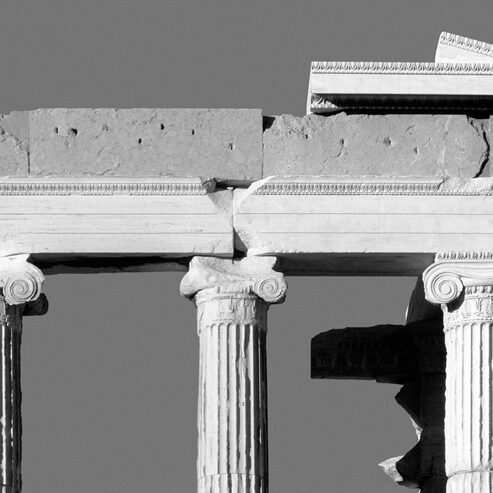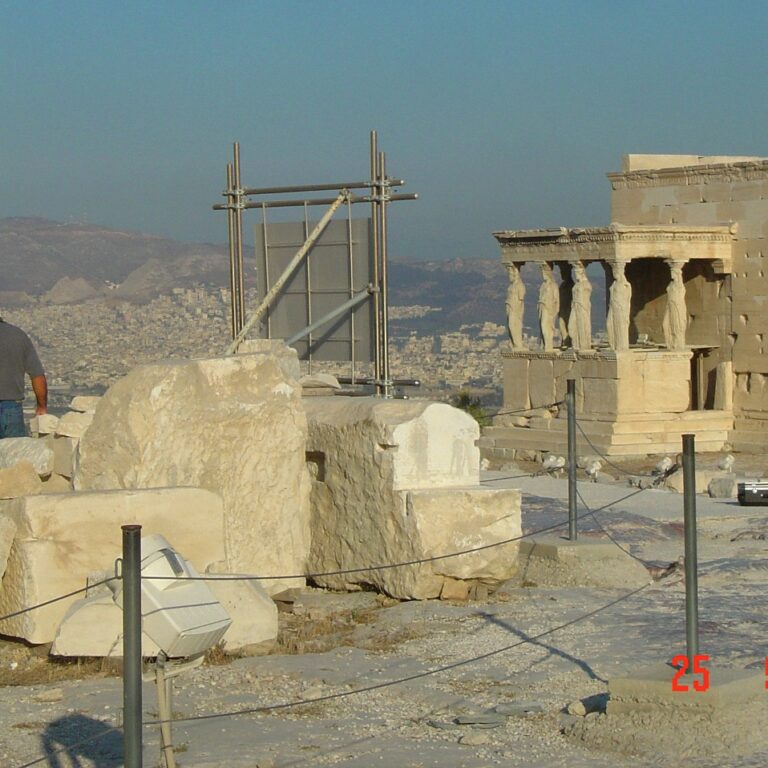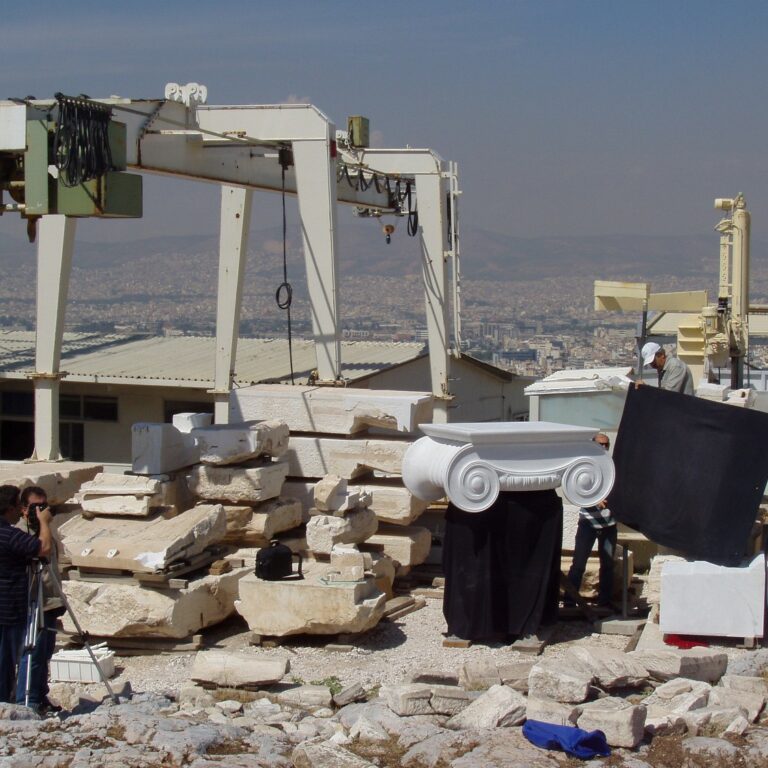
Special photography of the Acropolis monuments may be divided into three parts:
Reportage
This is the recording of the works being carried out on the monuments and it is used as a photographic daybook. The photographs are taken with small format cameras in order to facilitate ease of movement among the architectural members stored on the ground, the scaffolding and cranes, and among the technicians while the works are being carried out, recording the works themselves.
Interventions
This is the photographic plotting of members, sections and wider areas of the monuments, wherever detailed photographic recording of their condition is necessary before any intervention whatsoever, even moving them. These photographs frequently require special constructions. They are in scale wherever possible. They are taken with medium-format cameras that permit enlarging. The photographs are used by researchers as archives or as equipment enabling them to recognize and visually to fill in members and sections of the monuments. Examples of this are the photographing of the Parthenon floor before placing the crane there and the photographing of the scattered cella wall blocks before resetting them in their correct places.
Progress and development of the works
This is the recording of each monument or sections of it as well, before the intervention. The photographs are taken from chosen and marked spots. This is of assistance in the regular photographic monitoring of the works, so that we have comparable photographs at different points in time, for example photographs of the east end of the Parthenon during the course of the works and after their completion. The cameras employed are of large format, so as to obtain greater clarity and enlargement capacity, but chiefly in order to avoid optical distortions of the monuments.
A constant aim in photographic documentation of the works on the Acropolis monuments is to create a limited number of photographs giving the greatest possible amount of information. This is extremely valuable for filing them and it facilitates their retrieval, study and publication, providing the necessary mass of information in a few photographs.




